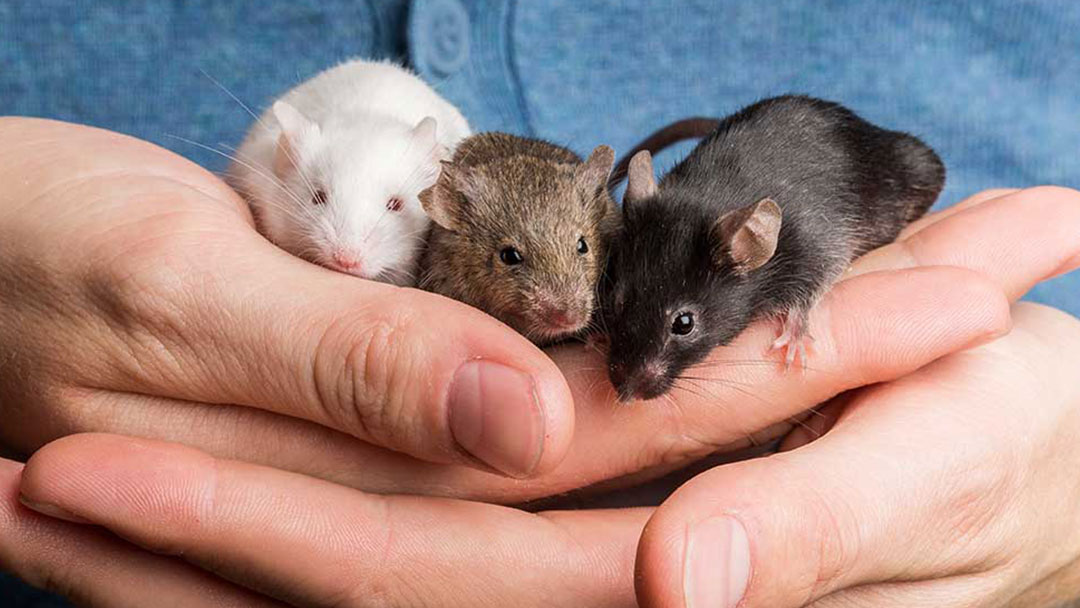
Caring For Pet Mice and Rats
Have you no room for a pet and no backyard? Do you want a pet but don’t want to spend a fortune on buying and feeding it? Do you dislike noisy, demanding pets that shed hair on your lounge suite and chase cars, and bring in dead birds? Maybe a mouse or rat is just the pet for you.
Mice and rats make fascinating pets. They are social, gentle creatures and cost very little to purchase. They are also cheap and easy to maintain.
Residences for rodents
Mice and rats can be housed in a variety of containers. Their rodent residence should be made of strong material that will resist the attempts of the mouse or rat to chew through it. Mice will rarely return to their cage if they escape, although by comparison, rats often do.
Metal or strong plastic cages are ideal. An old aquarium makes a good house as the mouse or rat cannot climb the glass walls. However, if you are using an aquarium, be sure that it has added ventilation and is in a shaded location, as it can become a very humid hot box if you are not careful.
Mesh cages are suitable but they must have a solid floor.
The cage should be as large as you can manage and preferably should have two or more levels. An upper level should be the ‘bedroom’ and should have a sleeping box such as a flowerpot or empty coconut shell, while the food and water should be in the lower ‘lounge/rumpus room’.
To add some fun, visit the hardware store and buy PVC pipes and connectors. Your rodent buddies will love to explore these and will rest and sleep in them too. Toilet rolls and plastic butter containers make good cubbies for mice and rats and you can buy a fascinating range of mouse and rat modular tunnels from your local pet shop.
Wood chips are commonly used for bedding, though unscented varieties are prefered to avoid respiratory problems. Cedar and pine woods emit aromatic hydrocarbons that can contribute to a variety of respiratory diseases in small mammals, especially for pets kept in small enclosures with poor ventilation. Cat litter such as the paper-based litters (Breeder’s Choice) or the lucerne-based litters (Natty Kat) are suitable alternatives. Sawdust is too fine and dusty and is best avoided.
Whatever the bedding used, it should be absorbent and changed regularly to prevent smell and to promote hygiene. Two to three bedding changes per week are normally needed. Shredded newspaper can be used as nesting material.
Although mice are very social creatures, male mice will usually fight if housed together. Therefore, males should be housed in separate containers. Male rats, on the other hand, are more tolerant of each other, and several males and females can be housed in the one cage.
Rats are usually regarded as being more docile and intelligent than mice. They seem to enjoy being handled more, they live longer and are more ‘robust’. They also seem to smell less.
Feeding mice and rats
While mice and rats will eat almost anything, including grains and meat products, commercially available rodent pellets are the easiest and most reliable diet.
Seeds, grains and cereals can also be fed and lucerne hay is particularly useful. Hay is an excellent fibre source. It helps to keep the mouse or rat’s intestines in good order. In addition, hay offers plenty of activities for rodents. Your mouse or rat will love to play with it and will use it to build nests. For a home made gourmet meal, make a treat by combining rolled oats, plain biscuits, mixed bird seed, bread soaked in water and fresh vegetables. For an occasional, special treat, fresh grasshoppers, crickets and cockroaches will give you a happy mouse or rat.
To keep your pet’s teeth in fine fettle, give it something to gnaw on such as a piece of raw rib or shank bone or a length of hard wood.
General care
Mice are prolific breeders, about twice as productive as rats. One female mouse can theoretically be responsible for the production of over 30,000 cubs in a year.
Mice can live for up to three years and rats for up to three and a half years. A female mouse is fertile as early as twenty-eight days of age but it is best not to breed with her until she is fifty days old. Mice can have litters of ten to twenty cubs whereas rats have litters of six to ten cubs.
Rats and mice can suffer from a variety of diseases. Of the serious conditions, the most common are tumours, bowel disease, pneumonia and skin infections. Generally, such diseases suggest poor housing or maintenance.
With any disease, the first step to a solution is to thoroughly clean the cage and utensils. Separate any sick mice or rats from the others and observe them. If the problem persists, veterinary attention should be sought. (Vets love seeing ‘different’ animals and you will get a warm reception!!)
Lastly - don’t forget them. Mice, rats and, for that matter, any animals that are confined to a cage are totally at your mercy. As they don’t bark or meow for food, they are sometimes forgotten in the busy lives that we all lead nowadays. Like all pets, they are a responsibility.